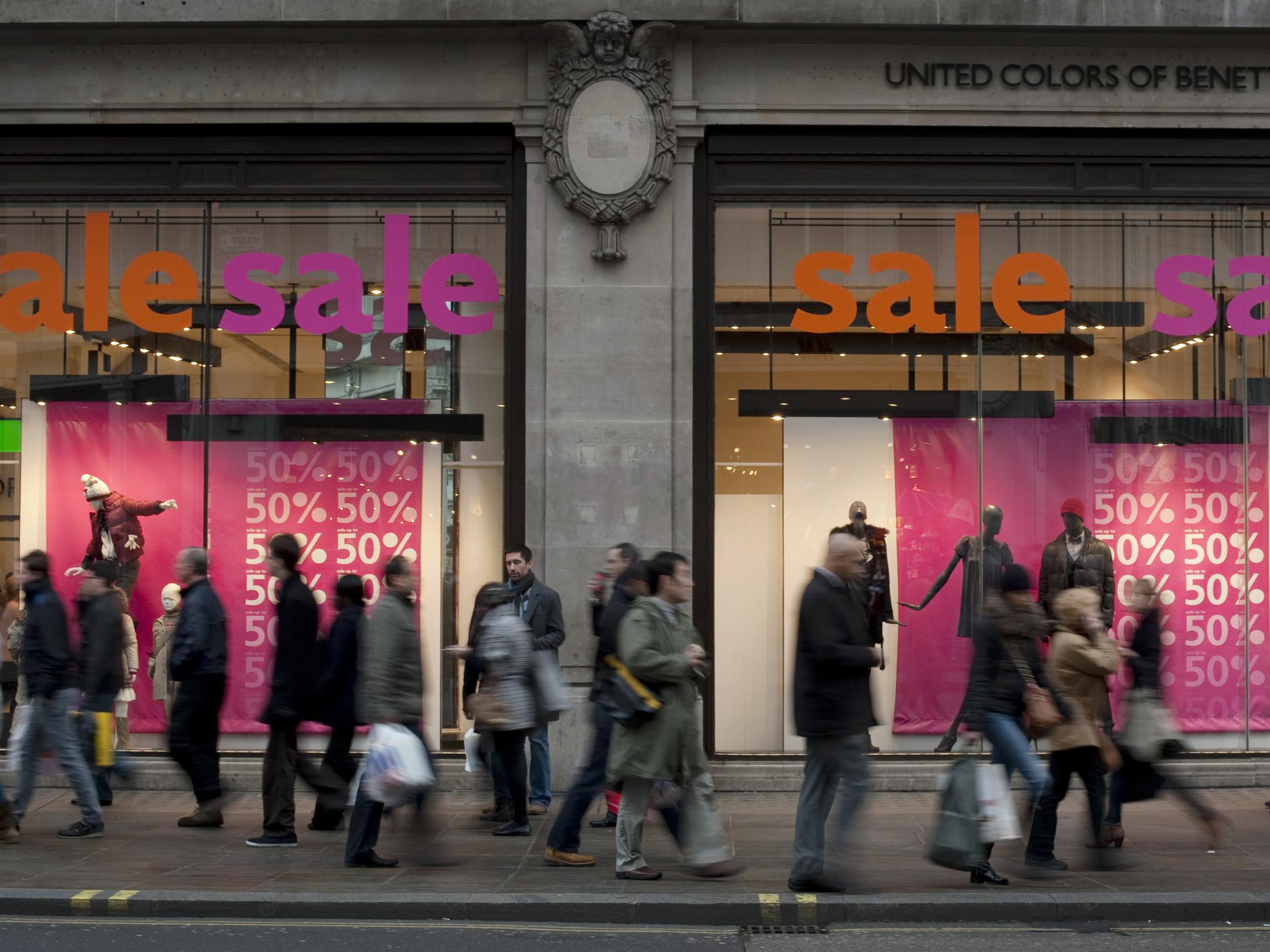UK retail spending dipped in December
In-store sales of non-food items fell by 4.4 per cent in December as squeezed shoppers spent more of their household budgets on essential items

Non-food retail sales slumped in December, as shoppers hit by inflationary pressures reined in spending over the crucial Christmas period, research by the British Retail Consortium shows.
The figures, published on Tuesday in collaboration with KPMG, show that in-store sales of non-food items dropped by 4.4 per cent on a like-for-like basis – which strips out changes in store size - in the three months to December, compared to the same period in 2016. That was the deepest since records began in 2012.
However, food sales increased 2.6 per cent on a like-for-like basis, the highest since June.
Like-for-like retail sales – so the two categories combined – rose 0.6 per cent from December 2016, when they had risen 1 per cent from the previous year.
Analysts said rising inflation and stagnant wage growth meant squeezed shoppers were now having to spending a greater proportion of their budgets on essential food items.
“The divergence between growth in sales of food and non-food has never been so stark,” said BRC chief executive Helen Dickinson.
“With inflation outpacing income growth, shoppers continued to see more of their spending power absorbed by essential items, including food, leaving less left over for buying Christmas gifts,” she added.
By contrast, overall online sales rose by 7.6 per cent, but this was still below the 12-month average of 8.0 per cent.
Paul Martin, head of retail at KPMG, said the figures further reinforced the disparity between the high street and online.
“Whilst a proportion of this divide can be attributed to Cyber Monday, shoppers are increasingly preferring to shop online, especially at Christmas,” he said.
“Grocers benefitted from festive feasts, but growth elsewhere on the high street was otherwise rather muted for the time of year. In contrast, all online categories grew, with health and beauty, shoes and clothes proving particularly popular. This all comes ahead of customer returns of course, but nevertheless December’s cold weather appeared to contribute to a fashion frenzy,” he added.
Separate figures published on Tuesday from the Ipsos Retail Performance index also highlight the tough conditions retailers currently face.
According to Ipsos, UK retail footfall was 9.6 per cent lower in December compared to the same month the previous year, as a result of after heavy snowfall across the country, piling further misery onto retailer.
The number of shoppers hitting the high street on Boxing Day was also down 5 per cent down on 2016’s level. 28 December was the busiest day of the year for shoppers, but footfall on that day was also 8.6 per cent lower than it was on the same day in 2016.
Subscribe to Independent Premium to bookmark this article
Want to bookmark your favourite articles and stories to read or reference later? Start your Independent Premium subscription today.

Join our commenting forum
Join thought-provoking conversations, follow other Independent readers and see their replies